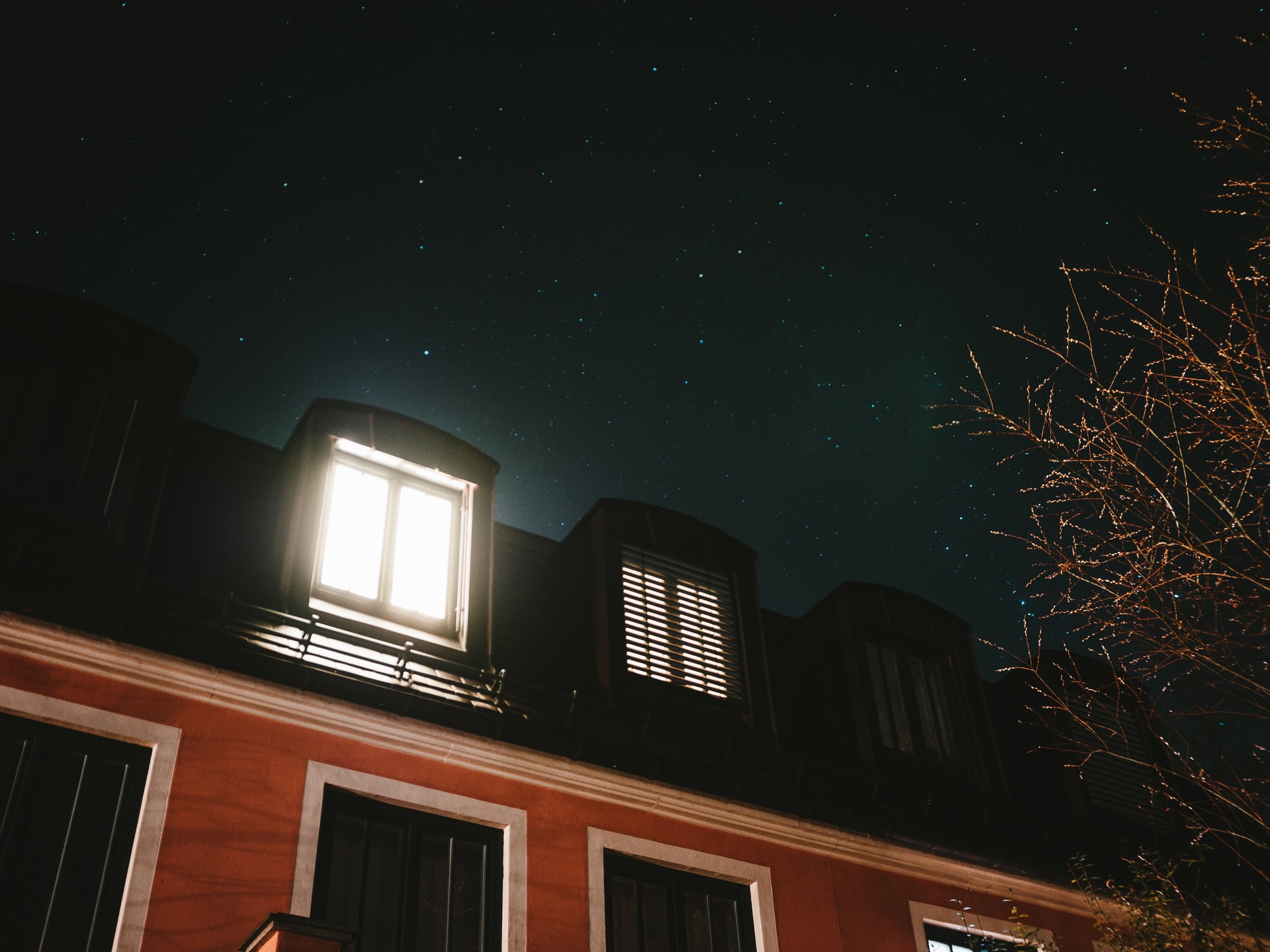
Being awake all night can be very beautiful – if it wasn’t for your 9 am tutorial the next day. What if I told you that there was a way to exploit those prime night hours? How open would you be to revolutionising modern day sleep patterns?
Being awake all night can be very beautiful – if it wasn’t for your 9 am tutorial the next day. What if I told you that there was a way to exploit those prime night hours? How open would you be to revolutionising modern day sleep patterns?

Photo by Yan Berthemy
As someone who thrives in the solitude of the wee hours of the night, rejoices under the blissful dark (and occasionally starry) skies, and enjoys dozing off at 4:00 am, I wrestled with my sleep throughout last semester with its 9:00 am classes five days a week. I sought to find a way to extract the late hours of the night, and yet wake up in time for vaguely productive days. A couple of days before a crucial exam, I hit the jackpot at 2:30 am when I discovered this rather cool sounding sleep pattern called ‘biphasic sleep’. My intrigued self was lured and tempted, as I excitedly informed my friends of this wonderful piece of information I had just stumbled upon. None of my dear friends failed to express their discontentment and disapproval at yet another one of my ideas to go against a so-called ‘normal’ sleep cycle. As grateful as I am for their honesty, some support wouldn’t hurt. Soon enough, I gave up on trying to find new ploys, and agreed that I can prolong my horrid sleep schedule for the rest of my university days (because when else can I afford to snooze at such odd hours?). While I got rid of those grand plans of falling into a biphasic sleep pattern, the idea never really dropped out of my head. In the spirit of rising and shining, sleep became an important and dear subject matter that I have decided to take on in this piece. In particular, I will examine biphasic sleep more closely and explore whether it is a viable alternative for our day-to-day lives.
Biphasic sleep (also called ‘bimodal sleep’) is a sleep pattern wherein a person sleeps in two different segments. The historian Roger Ekirch took on a qualitative study wherein he attempted to retrace the sleep patterns of premodern people through the means of artefacts. He found a biphasic sleep pattern, which entailed people sleeping for two segments of 3-4 hours, with a 1-2 hour interval of wakefulness in the middle of the night. Ekirch suggests that these premodern biphasic sleep patterns faded away in the wake of the 19th century, with gas and electricity coming along. Although he believes that biphasic sleep is our ‘natural’ pattern of sleep, it is yet a questionable hypothesis. Biphasic sleep was not exactly noticed in some of the observed hunter-gatherer societies (Yetish et al., 2015 as cited in Verhoeven, 2020), and Pioczyk (2014) shows that under experimental conditions (i.e., putting modern folk such as ourselves in Stone Age conditions), we do not develop biphasic sleeping patterns (Verhoeven, 2020).
Much as I am inclined to stand my ground for Ekirch’s findings and win my case for biphasic sleep being a ‘natural’ pattern, I cannot possibly know and neglect the falsification attempts and their results. In an attempt to re-examine Ekirch’s qualitative findings, more quantitative methodology has been employed by Gerrit Verhoeven. He investigates the olden day sleep patterns through the means of time-use analysis. Through the Antwerp criminal court eyewitness testimonials from the 1700s, Verhoeven found that Antwerpers slept for around 7.5 to 8.5 hours a night. Thus, if they did engage in bimodal sleep (which other eyewitness evidence showed they did not), they would have a mere five hours of a sleep a night, which would have been far too little. Additionally, daytime naps were not common, and were usually attributed to the elderly or those with sleep disorders, hence ruling out the possibility of a daytime nap as the second sleep segment of the day.
While Verhoeven and Ekirch engaged in an exchange of letters to each other, debating the others’ methodology and arguments, I have decided to put the biphasic routine to the test in the modern-day world. In order to avoid the ethics committee and escape any funding requirements, I will be exploiting myself as a subject of a biphasic sleep experiment in the near future. While it sounds extremely appealing, it is yet to be seen whether it is truly viable or not in our current lives. Detailed sleep journaling and a conclusive report shall follow, exclusively on Spiegeloog. Stay tuned!
References
–Verhoeven G. (Pre)Modern sleep. New evidence from the Antwerp criminal court (1715–1795). J Sleep Res. 2021;30:e13099. https://doi.org/10.1111/jsr.13099.
As someone who thrives in the solitude of the wee hours of the night, rejoices under the blissful dark (and occasionally starry) skies, and enjoys dozing off at 4:00 am, I wrestled with my sleep throughout last semester with its 9:00 am classes five days a week. I sought to find a way to extract the late hours of the night, and yet wake up in time for vaguely productive days. A couple of days before a crucial exam, I hit the jackpot at 2:30 am when I discovered this rather cool sounding sleep pattern called ‘biphasic sleep’. My intrigued self was lured and tempted, as I excitedly informed my friends of this wonderful piece of information I had just stumbled upon. None of my dear friends failed to express their discontentment and disapproval at yet another one of my ideas to go against a so-called ‘normal’ sleep cycle. As grateful as I am for their honesty, some support wouldn’t hurt. Soon enough, I gave up on trying to find new ploys, and agreed that I can prolong my horrid sleep schedule for the rest of my university days (because when else can I afford to snooze at such odd hours?). While I got rid of those grand plans of falling into a biphasic sleep pattern, the idea never really dropped out of my head. In the spirit of rising and shining, sleep became an important and dear subject matter that I have decided to take on in this piece. In particular, I will examine biphasic sleep more closely and explore whether it is a viable alternative for our day-to-day lives.
Biphasic sleep (also called ‘bimodal sleep’) is a sleep pattern wherein a person sleeps in two different segments. The historian Roger Ekirch took on a qualitative study wherein he attempted to retrace the sleep patterns of premodern people through the means of artefacts. He found a biphasic sleep pattern, which entailed people sleeping for two segments of 3-4 hours, with a 1-2 hour interval of wakefulness in the middle of the night. Ekirch suggests that these premodern biphasic sleep patterns faded away in the wake of the 19th century, with gas and electricity coming along. Although he believes that biphasic sleep is our ‘natural’ pattern of sleep, it is yet a questionable hypothesis. Biphasic sleep was not exactly noticed in some of the observed hunter-gatherer societies (Yetish et al., 2015 as cited in Verhoeven, 2020), and Pioczyk (2014) shows that under experimental conditions (i.e., putting modern folk such as ourselves in Stone Age conditions), we do not develop biphasic sleeping patterns (Verhoeven, 2020).
Much as I am inclined to stand my ground for Ekirch’s findings and win my case for biphasic sleep being a ‘natural’ pattern, I cannot possibly know and neglect the falsification attempts and their results. In an attempt to re-examine Ekirch’s qualitative findings, more quantitative methodology has been employed by Gerrit Verhoeven. He investigates the olden day sleep patterns through the means of time-use analysis. Through the Antwerp criminal court eyewitness testimonials from the 1700s, Verhoeven found that Antwerpers slept for around 7.5 to 8.5 hours a night. Thus, if they did engage in bimodal sleep (which other eyewitness evidence showed they did not), they would have a mere five hours of a sleep a night, which would have been far too little. Additionally, daytime naps were not common, and were usually attributed to the elderly or those with sleep disorders, hence ruling out the possibility of a daytime nap as the second sleep segment of the day.
While Verhoeven and Ekirch engaged in an exchange of letters to each other, debating the others’ methodology and arguments, I have decided to put the biphasic routine to the test in the modern-day world. In order to avoid the ethics committee and escape any funding requirements, I will be exploiting myself as a subject of a biphasic sleep experiment in the near future. While it sounds extremely appealing, it is yet to be seen whether it is truly viable or not in our current lives. Detailed sleep journaling and a conclusive report shall follow, exclusively on Spiegeloog. Stay tuned!



